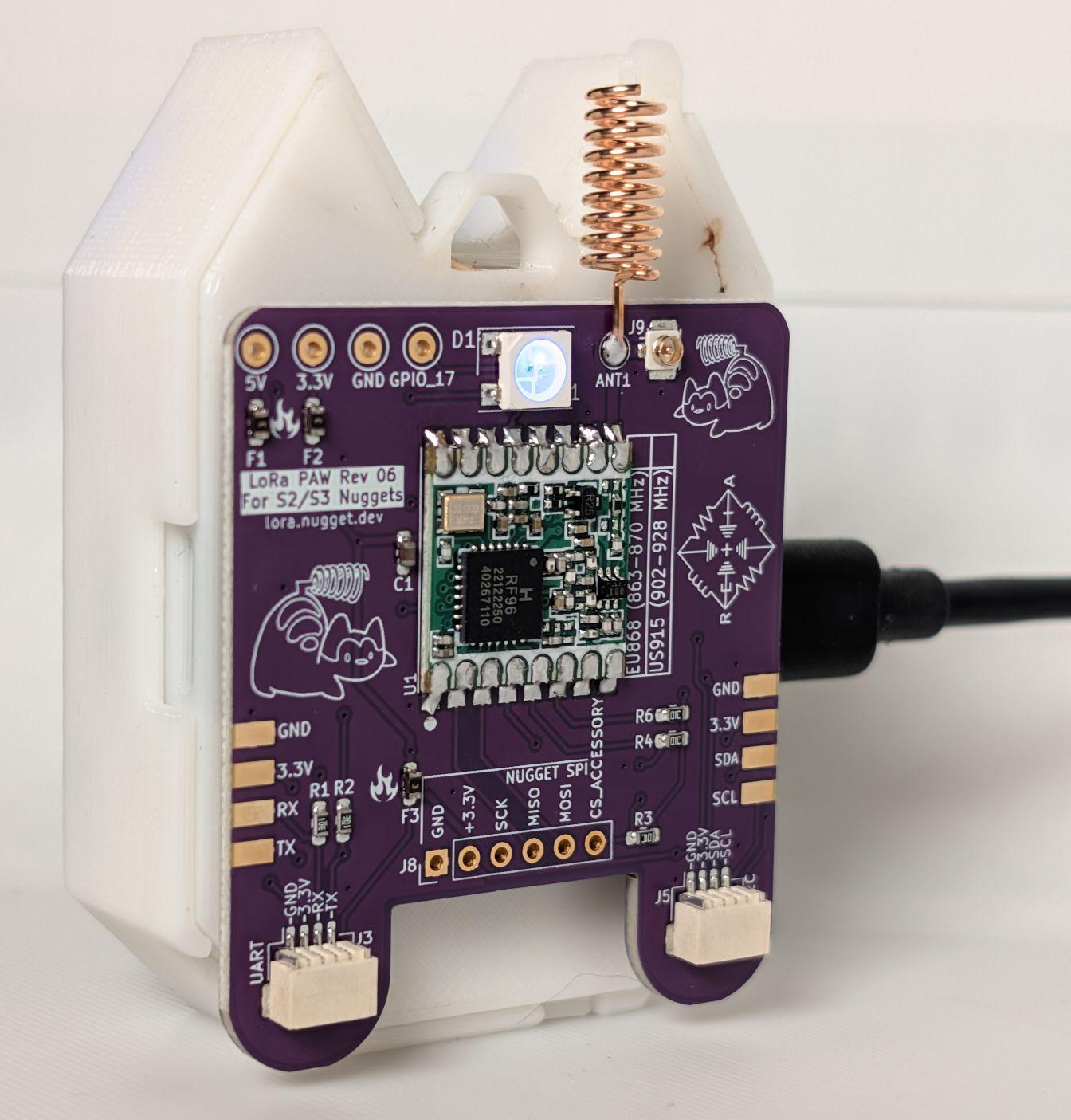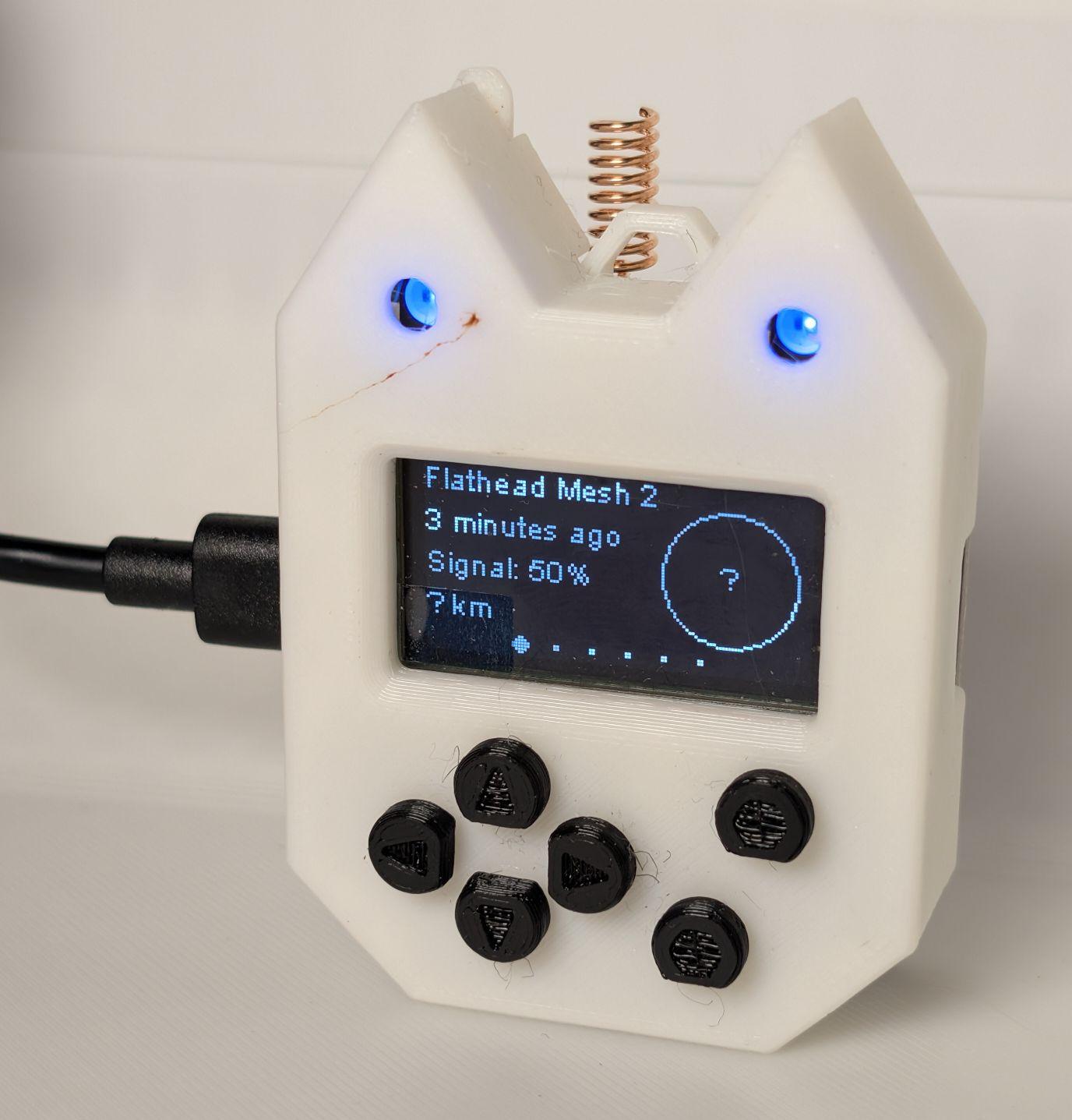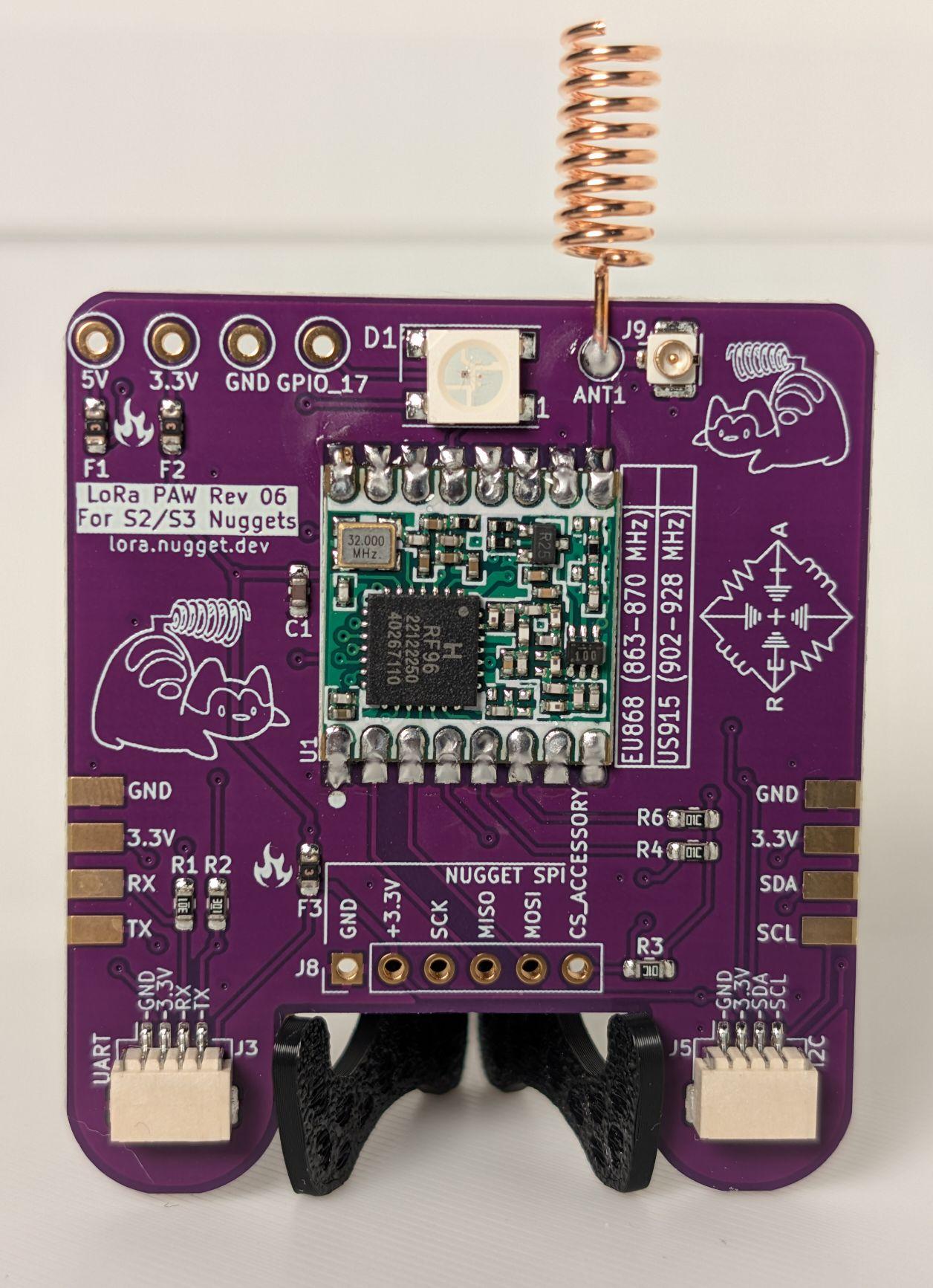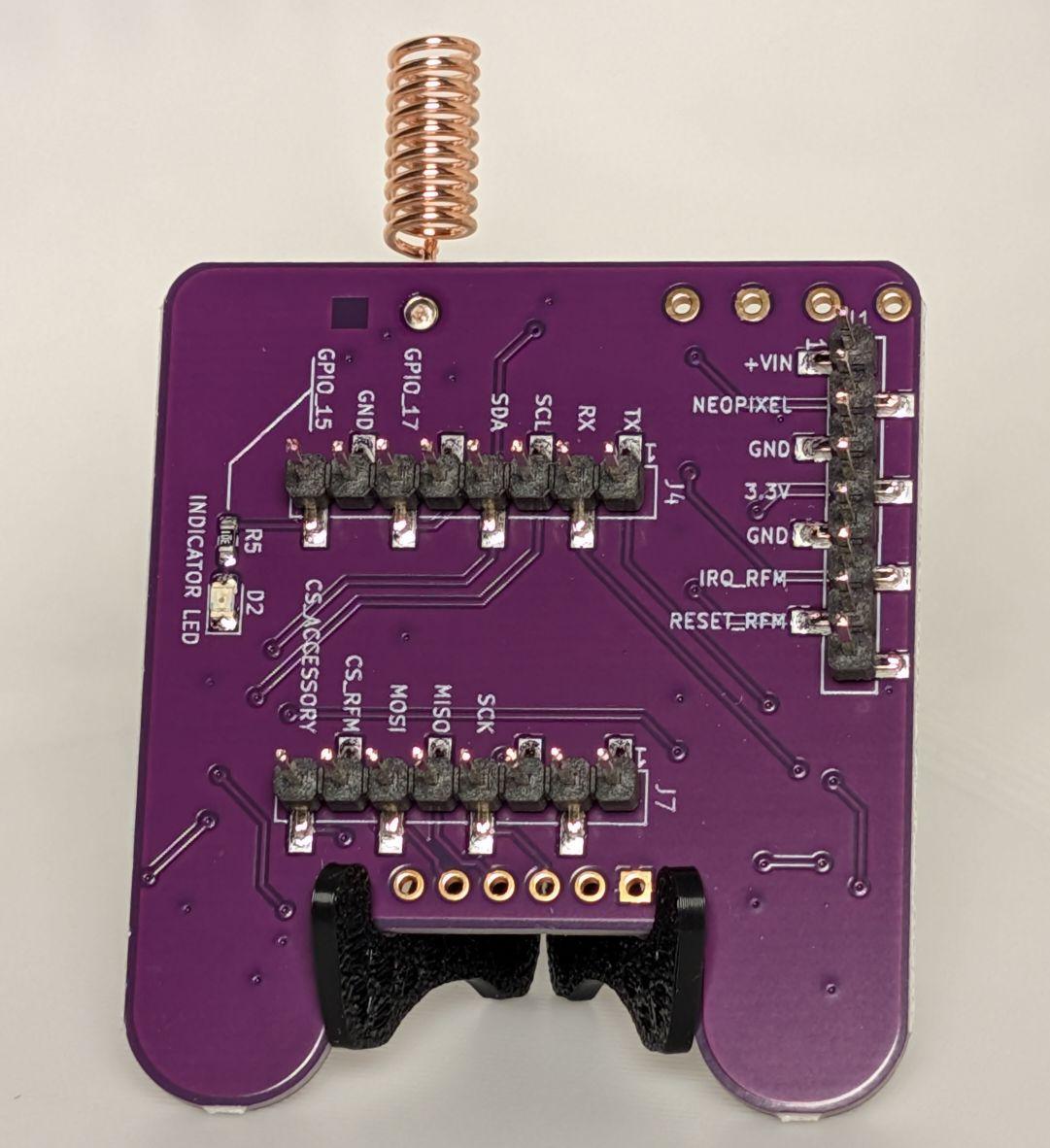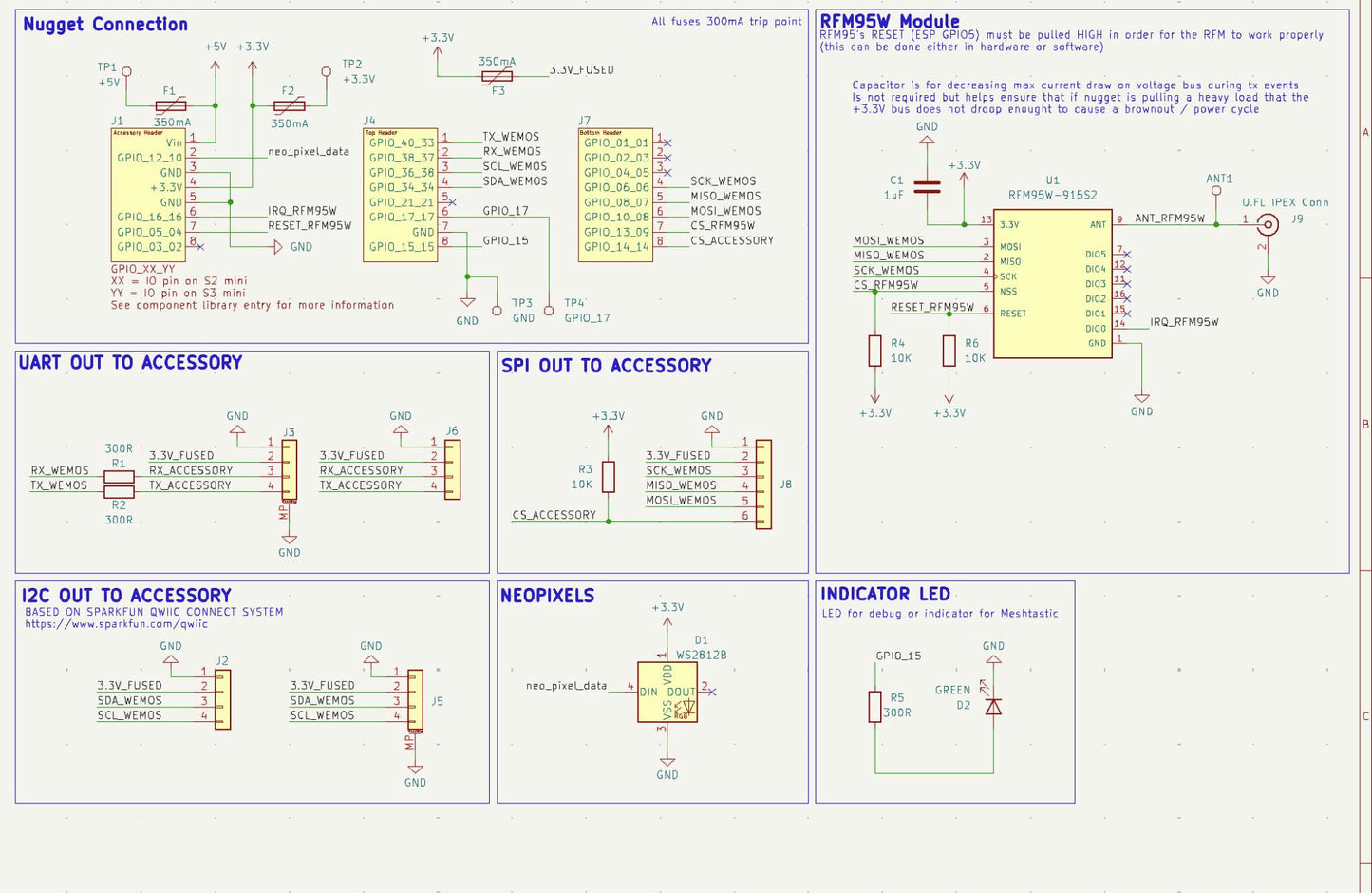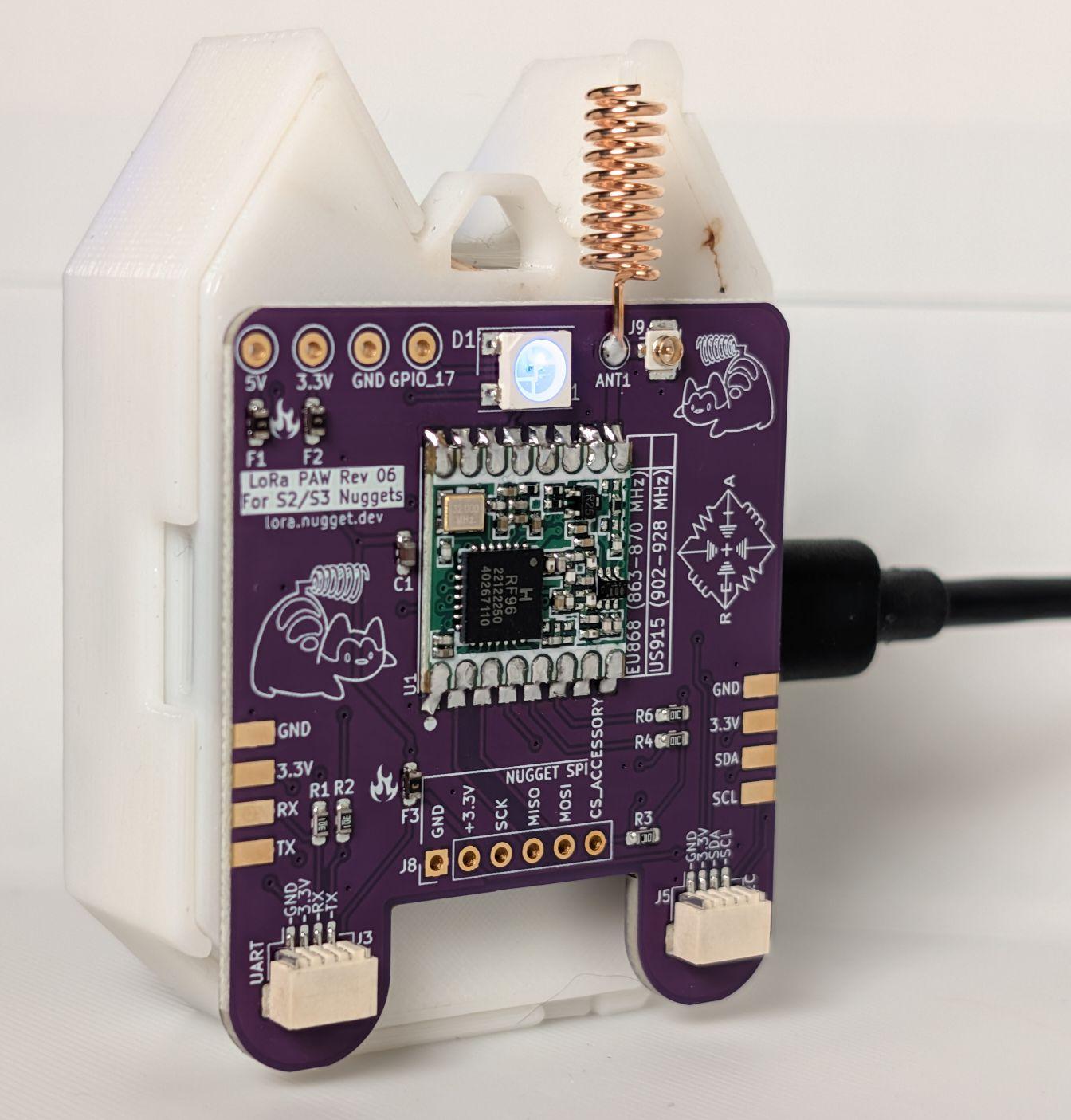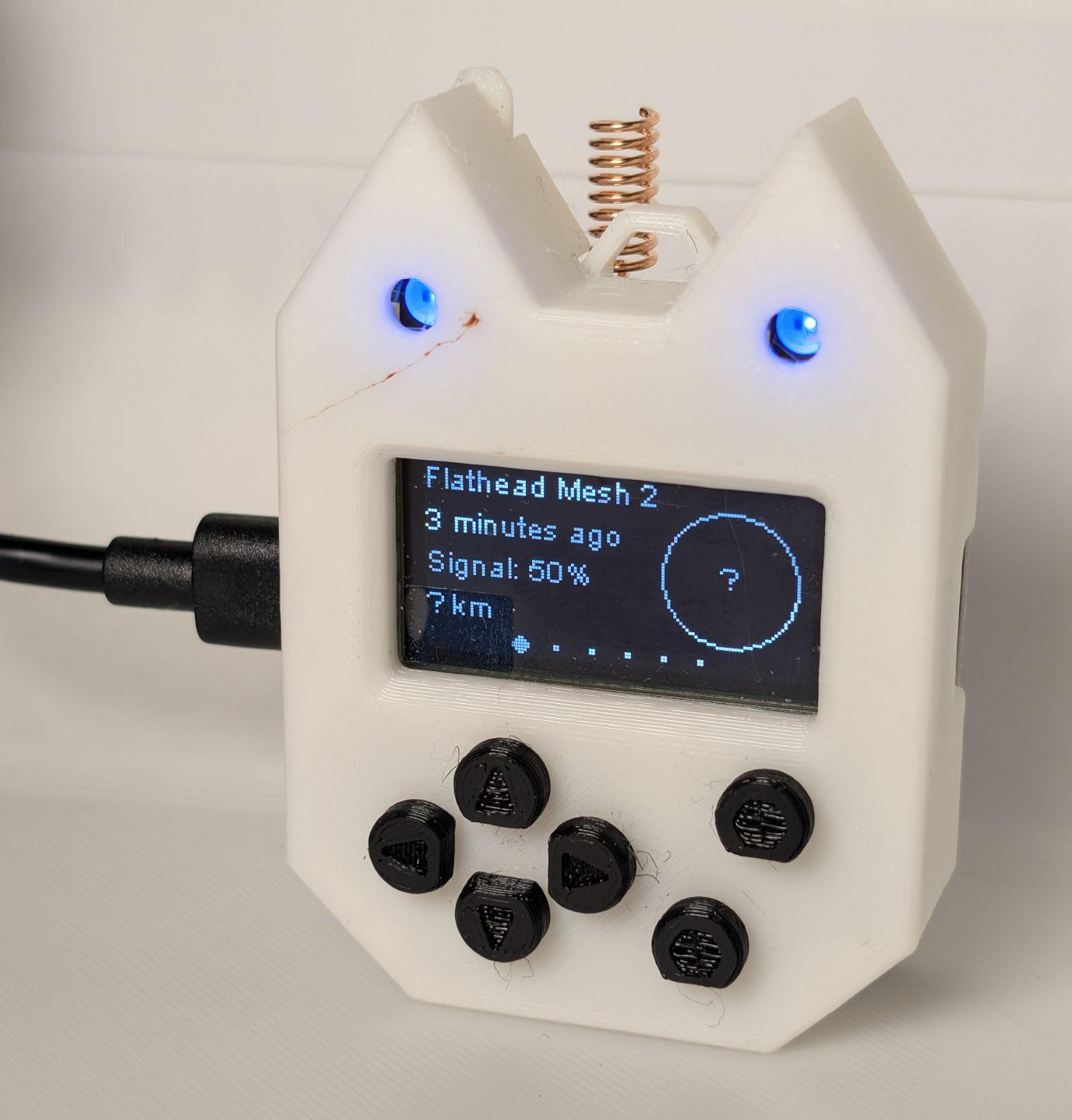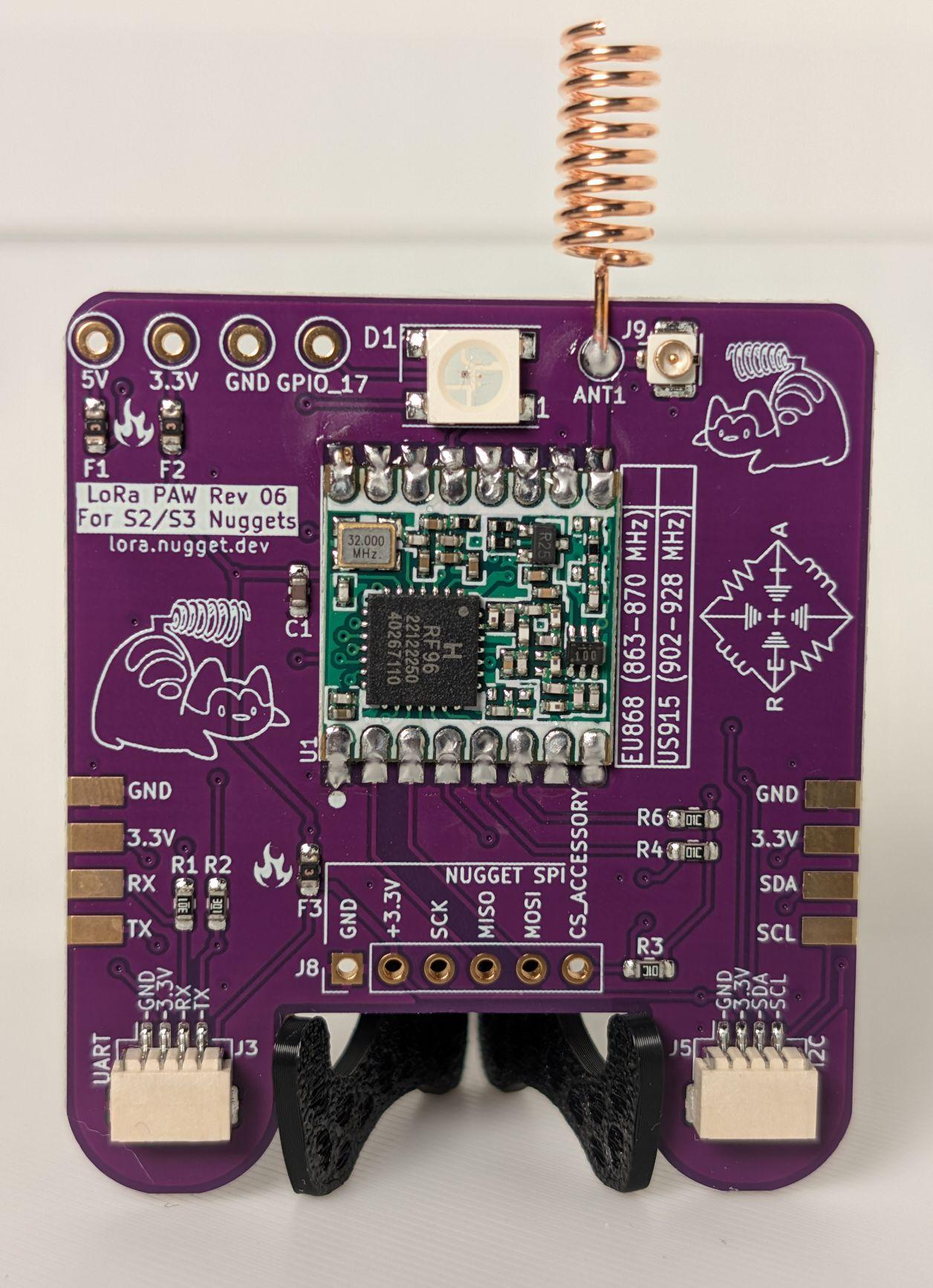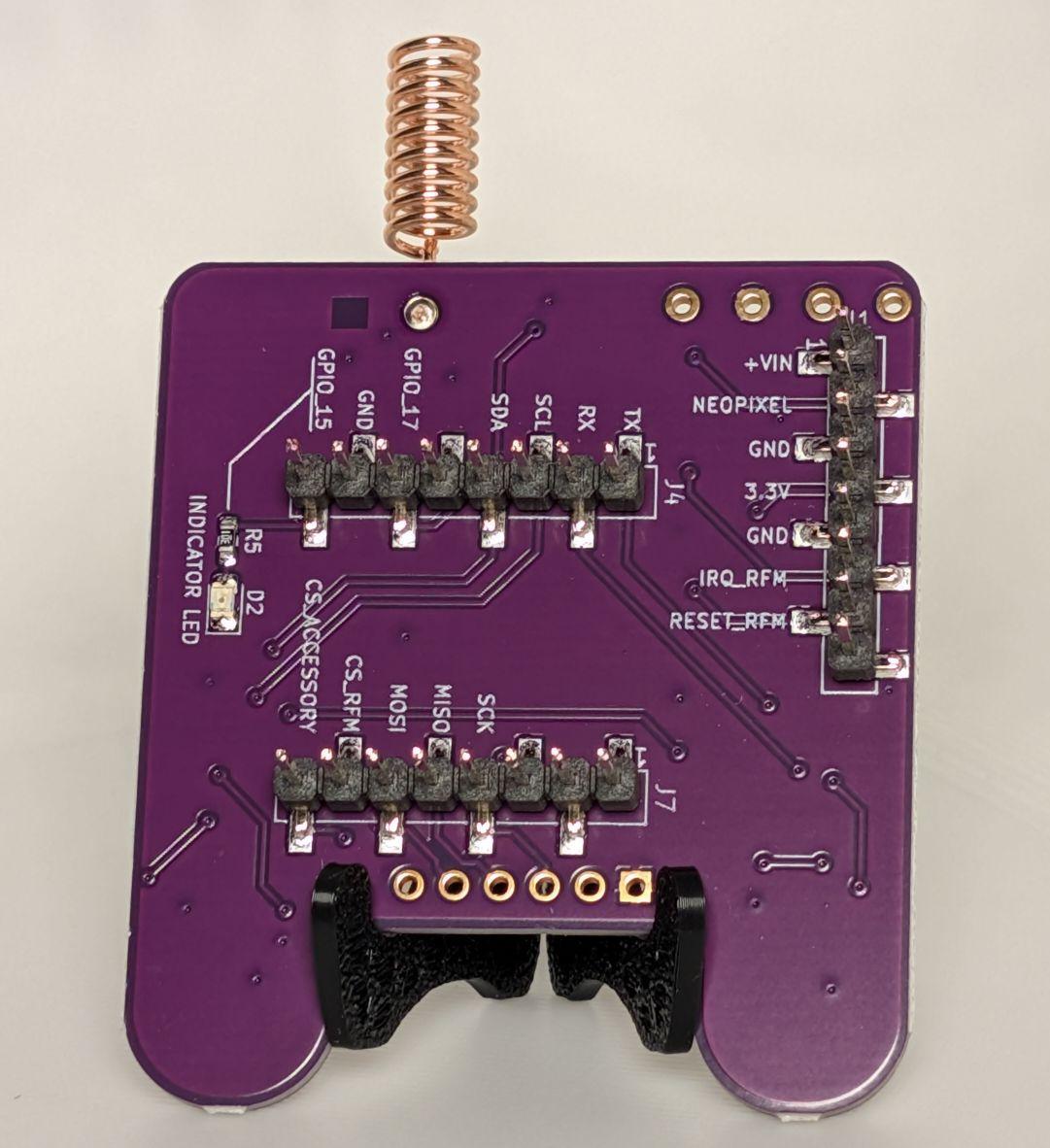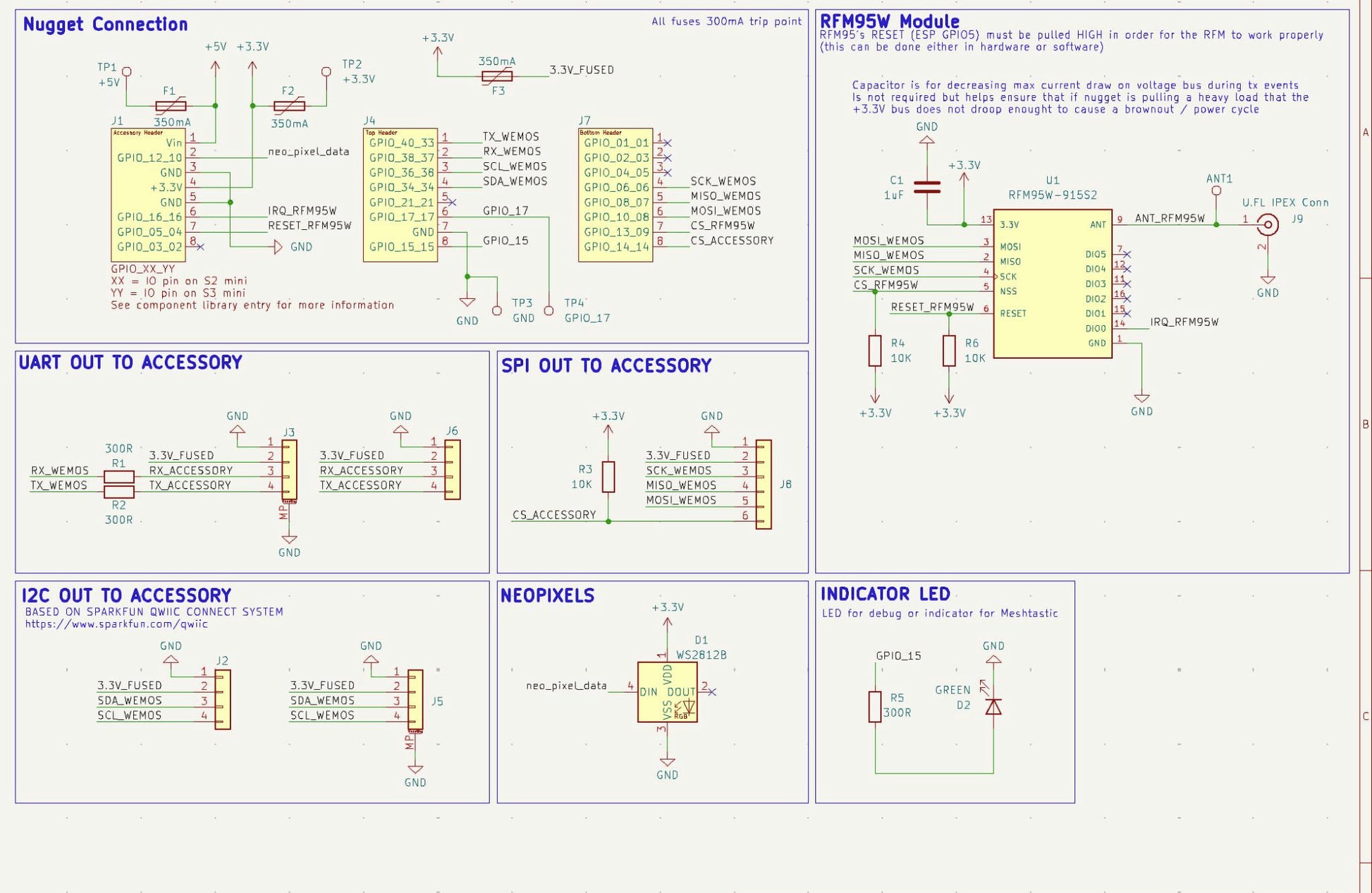Retia.io
LoRa Radio Backpack for USB & Bluetooth Nuggets (RFM95)
Couldn't load pickup availability
LoRa Radio Backpack for Nugget (RFM95) ***currently shipping rev.6 boards for all orders (see bottom of page for changelog)
Upgrade your USB Nugget or Bluetooth Nugget with the LoRa Radio Backpack, an add-on designed to bring long-range (LoRa) communication to your favorite development platform. With the powerful RFM95 radio module at its core, this backpack makes it easy to integrate Meshtastic on the Bluetooth Nugget, execute long-range bad USB attacks with the USB Nugget, and explore the full potential of LoRa technology.
Unlike standalone boards, this backpack is designed to seamlessly connect to the USB and Bluetooth Nugget, leveraging their mainboard for power and processing. Perfect for prototyping, learning, and building powerful long-range wireless networks with minimal setup.
Features and Specifications:
RFM95 LoRa Module:
- Compatible with 868MHz or 915MHz frequencies
*make sure to select the correct radio when adding to your cart
- Long-range, small-packet data transmission for IoT, Meshtastic, and more.
- Power output selectable via software: +5 to +20 dBm (up to 100mW).
- Extremely low power consumption: ~300μA in sleep mode, ~120mA during transmission.
Flexible Connectivity:
- Supports UART, SPI, and I2C for easy integration of sensors, inputs, and outputs.
- Perfect for CircuitPython, Arduino, on USB Nuggets, plus Meshtastic on the Bluetooth Nugget.
Compact Add-On:
- Designed as a plug-and-play backpack for the USB Nugget and Bluetooth Nugget.
- No additional microcontroller—relies on the Nugget for processing.
- Includes a coil antenna for North America 915MHz frequency or wired antenna for European standard 868MHz.
Technical Specifications:
- Power Requirements: Operates on 3.3V provided by the Nugget.
- Low Power Modes: Minimizes power draw.
- Dimensions: Perfectly sized to align with the Nugget’s compact form factor.
- Antenna: High-quality coil or wire antenna for reliable LoRa communication.
What Can I Add?
The LoRa backpack supports the following types of devices:
UART Devices
UART is widely used for communication with devices requiring simple serial interfaces:
- GPS Modules: For location tracking and geofencing (e.g., u-blox Neo-6M, Neo-7M).
- Serial Sensors: Devices like air quality sensors or temperature/humidity sensors (e.g., DHT22 with serial output).
- RFID Readers: For identification and access control (e.g., MFRC522).
- GSM Modules: For cellular communication, SMS, or backup connectivity (e.g., SIM800L, SIM900).
- Bluetooth Modules: For secondary short-range communication (e.g., HC-05, HC-06).
- Serial Cameras: For low-bandwidth imaging or motion detection (e.g., OV7670 Serial Camera Module).
SPI Devices
SPI is perfect for high-speed communication with more complex devices:
- Flash Memory Chips: Store data logs (e.g., W25Q64).
- RF Transceivers: Additional radios for specific wireless needs (e.g., nRF24L01).
- Accelerometers and Gyroscopes: For motion sensing and tracking (e.g., MPU-6050, ADXL345).
- Temperature Sensors: High-resolution temperature monitoring (e.g., MAX31855 thermocouple sensor).
- Displays: Small OLED or TFT displays for output (e.g., ST7735, SSD1306).
- Digital-to-Analog Converters (DACs): For generating analog signals (e.g., MCP4921).
- Barometric Pressure Sensors: For altitude or weather applications (e.g., BMP280).
I2C Devices
I2C is widely used for low-speed, multi-device communication:
Environmental Sensors:
- Temperature/Humidity: (e.g., SHT31, HTU21D).
- Barometric Pressure: (e.g., BMP280, BME680).
- Air Quality Sensors: (e.g., CCS811, SGP30).
Light Sensors: For ambient light detection (e.g., TSL2591).
Magnetometers: For compass and heading (e.g., HMC5883L).
Real-Time Clocks (RTC): For timekeeping and scheduling (e.g., DS3231).
EEPROM Modules: For additional non-volatile memory (e.g., 24LC256).
Proximity Sensors: For presence or distance detection (e.g., VL53L0X).
Display Modules: Low-power I2C-based screens (e.g., SSD1306 OLED).
Color Sensors: Detect RGB colors or ambient light (e.g., TCS34725).
Use cases:
GPS-Enabled Environmental Monitoring Node:
- BME680 (I2C) for air quality, BMP280 (SPI) for barometric pressure, and Neo-6M GPS (UART) for location.
Remote Presence Detection:
- Radar presence sensor (UART) with data transmitted via LoRa.
Long Range Bad USB:
- Send BadUSB commands from miles away to a USB Nugget equipped with a LoRa backpack, performing keystroke injection attacks.
Ready to Build?
Whether you’re diving into Meshtastic, creating custom IoT solutions, or learning about LoRa technology, the LoRa Radio Backpack unlocks new possibilities for your Nuggets. With robust connectivity and seamless integration, it’s the ultimate upgrade for wireless innovation.
-------------------------------------------------------------------------------------------------------------------
v2
Updated board shape
Added I2C, SPI, & serial connections
Added additional neopixles
Allowed both LORA radios to be connected at the same time
Added external power input
v3
Updated board shape
Removed RYLR998 footprint
Removed external power input
Added silkscreen art
Moved from 3 to 1 neopixles
v4
Added fuses to all output voltage lines (5V/3.3V)
Added solder pads to I2C and serial lines
Added GPIO17 output pin
v5
updated fuse values
updated board shape
added selection area for lora frequency
v6
updated footprint of surface mount connectors for easier manufacturing
